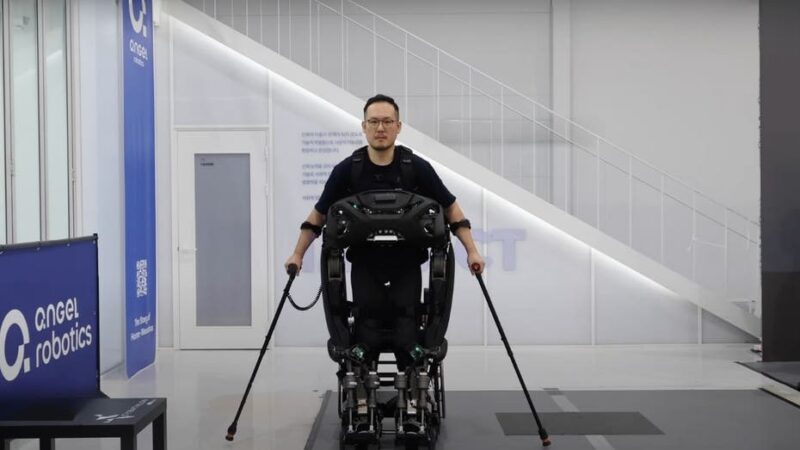Revolutionizing Mobility: The WalkON Suit F1 Empowers Paralyzed Individuals

In an era of rapid technological advancement, mobility aids for individuals with disabilities are undergoing remarkable transformations. Among these innovations, the WalkON Suit F1, created by the Korea Advanced Institute of Science and Technology (KAIST), represents a significant leap forward for paraplegic patients seeking greater independence.
Breaking Barriers with Innovative Design
The WalkON Suit F1 is not just another exoskeleton; it is engineered to enhance the autonomy of its users. One of its standout features is the front-docking system, which allows individuals in wheelchairs to don the suit without the need for assistance. This unique capability addresses a common challenge faced by traditional exoskeletons, where caregivers are often required to help users get into position.
Advanced Technology for Enhanced Stability
Safety and stability are paramount for individuals using exoskeletons. The WalkON Suit F1 boasts an advanced balance control system that actively manages the user’s center of gravity, preventing falls as they transition from sitting to standing. This feature not only boosts user confidence but also allows for hands-free movement, enabling users to engage in activities while standing.
Powerful Motor Technology and AI Integration
Delving into the technical specifications, the WalkON Suit F1 is equipped with superior motor technology. The output density of its motors has doubled compared to earlier models, providing more power within a compact design. Furthermore, the integration of an onboard neural network application allows the suit to adapt to various users and situations, enhancing its functionality.
Another significant innovation is the vision recognition system, which enables the suit to detect and navigate obstacles, further ensuring the safety and independence of its user. KAIST has achieved remarkable progress in manufacturing, producing all core components in-house. This includes improvements to motor driver performance, which has increased threefold compared to previous technologies.
Success at the Cybathlon: A Test of Capability
The effectiveness of the WalkON Suit F1 was put to the test at the Cybathlon 2024, an event likened to the Olympics for assistive technology. The suit’s pilot, Seunghwan Kim, not only participated but excelled, completing all challenges in an impressive six minutes and 41 seconds. These tasks included sidestepping between narrow chairs and performing kitchen activities, showcasing the suit’s versatility and efficiency.
A Legacy of Innovation
Under the guidance of Professor Kyoung-Chul Kong from KAIST’s Department of Mechanical Engineering, the development of exoskeleton technology has been a continuous journey since 2015. The original WalkON Suit debuted in 2016, and by 2020, its successor was achieving speeds of nearly 2 mph—an impressive feat for wearable robotics.
Looking Ahead: The Future of Assistive Technology
The WalkON Suit F1 is not just a technological marvel; it symbolizes a future where individuals with paraplegia can reclaim their independence and mobility. As Professor Kong aptly states, this suit represents “the culmination of wearable robot technology for the disabled.” Its introduction is setting new benchmarks for the industry, and the possibilities for future developments are thrilling.
As we reflect on how innovations like the WalkON Suit F1 can transform lives, we invite you to share your thoughts. What advancements in assistive technology would you like to see in the future? Reach out to us to join the conversation.
For more insights and updates on technology, consider subscribing to our newsletter for the latest news and tips.
Copyright 2024 CyberGuy.com. All rights reserved.


